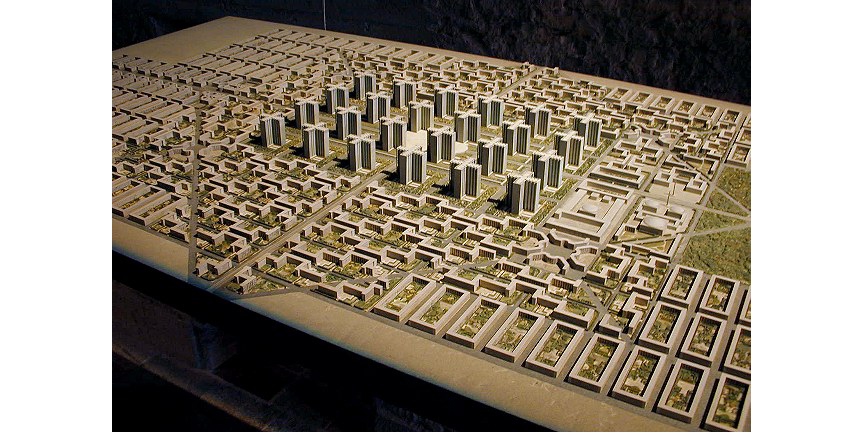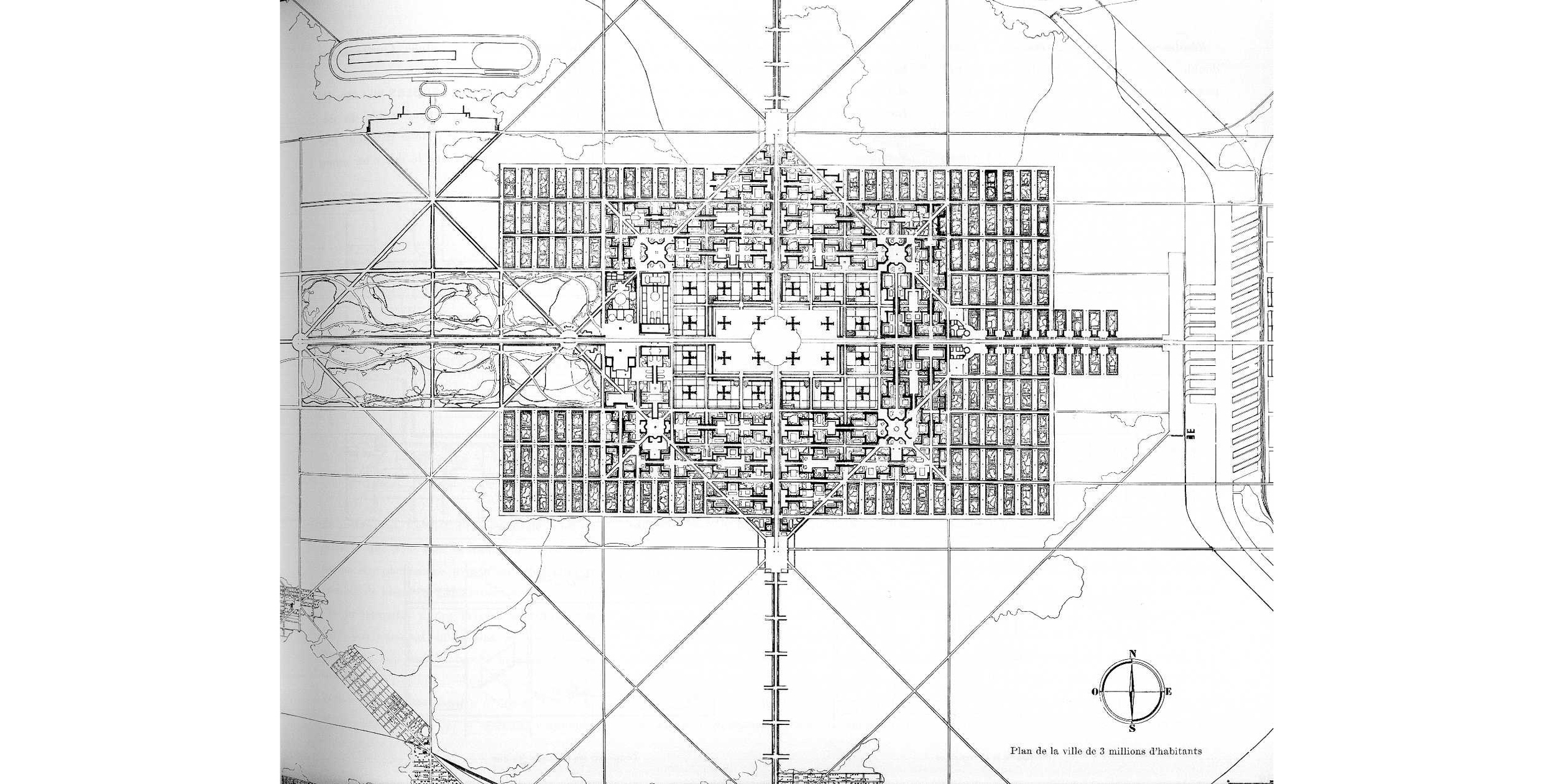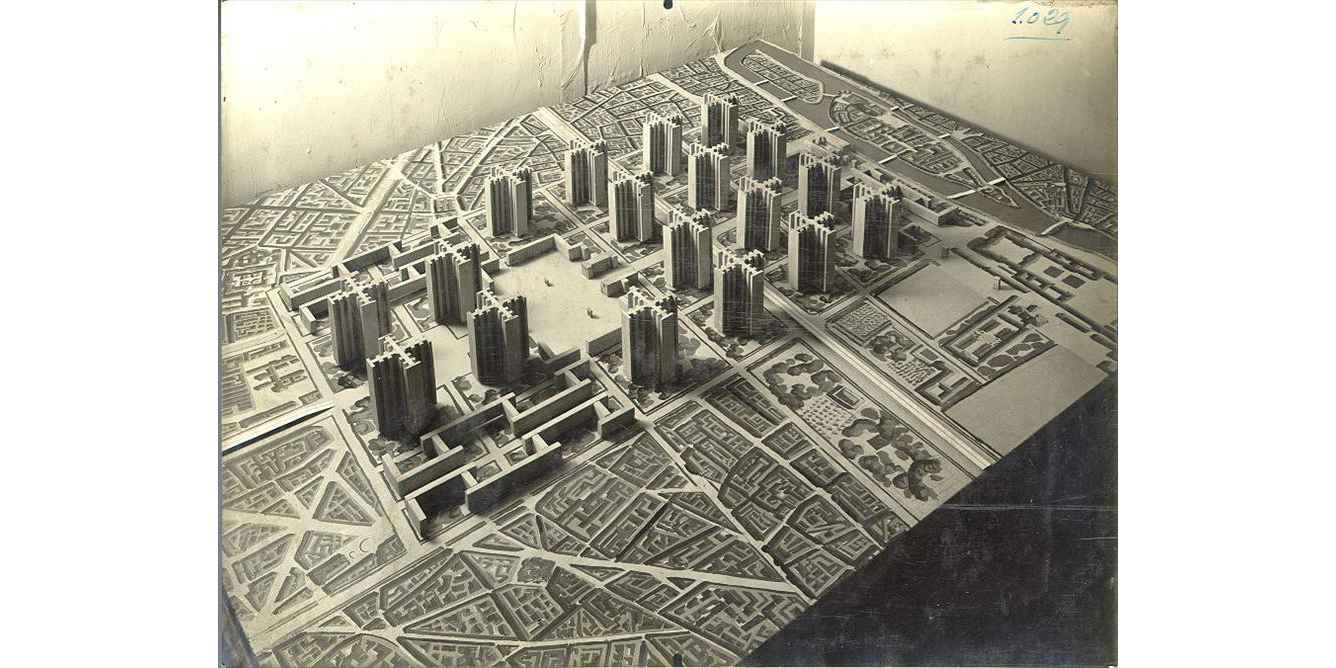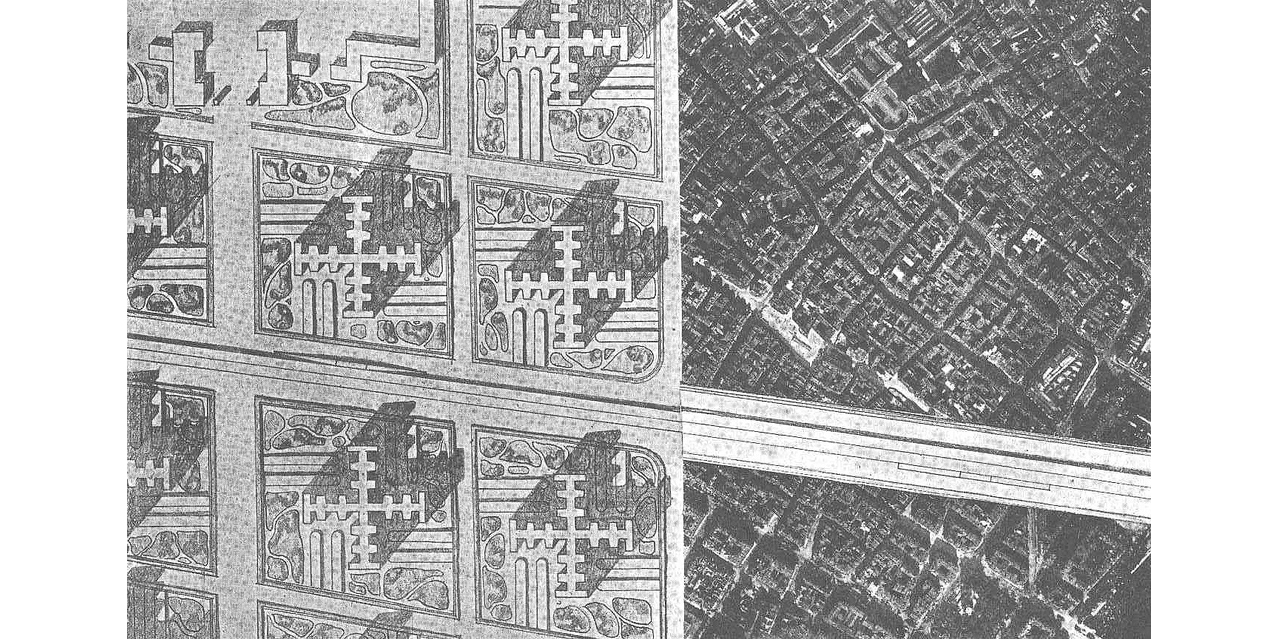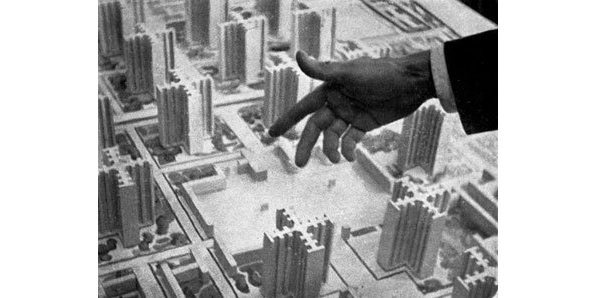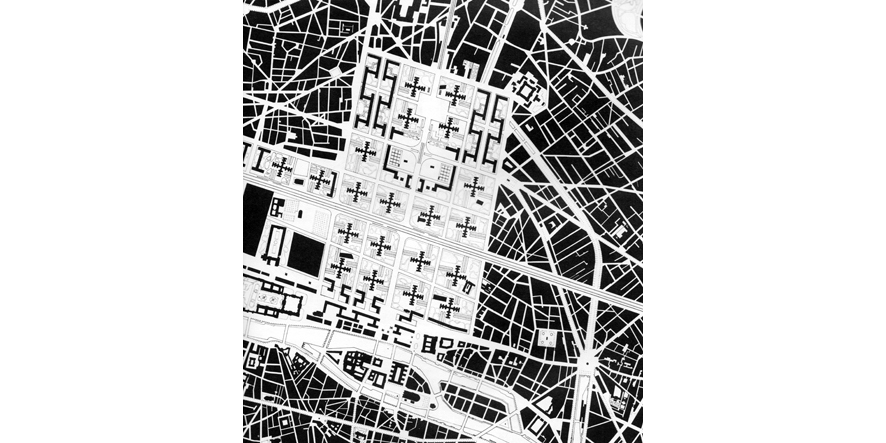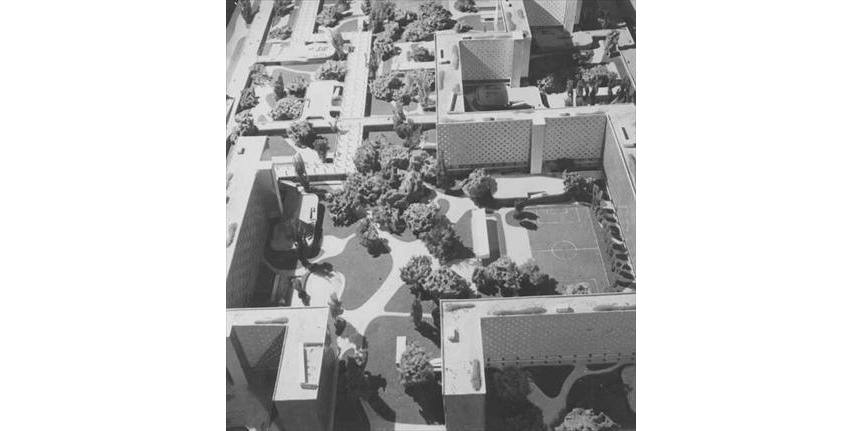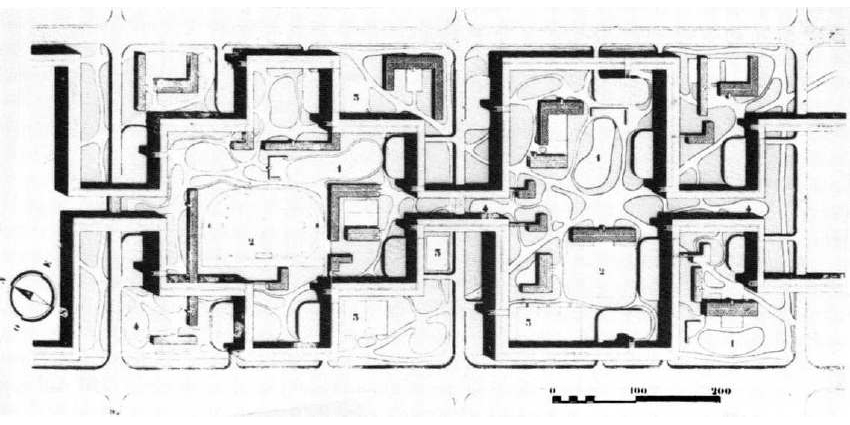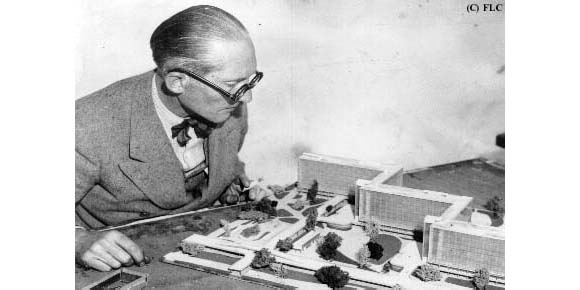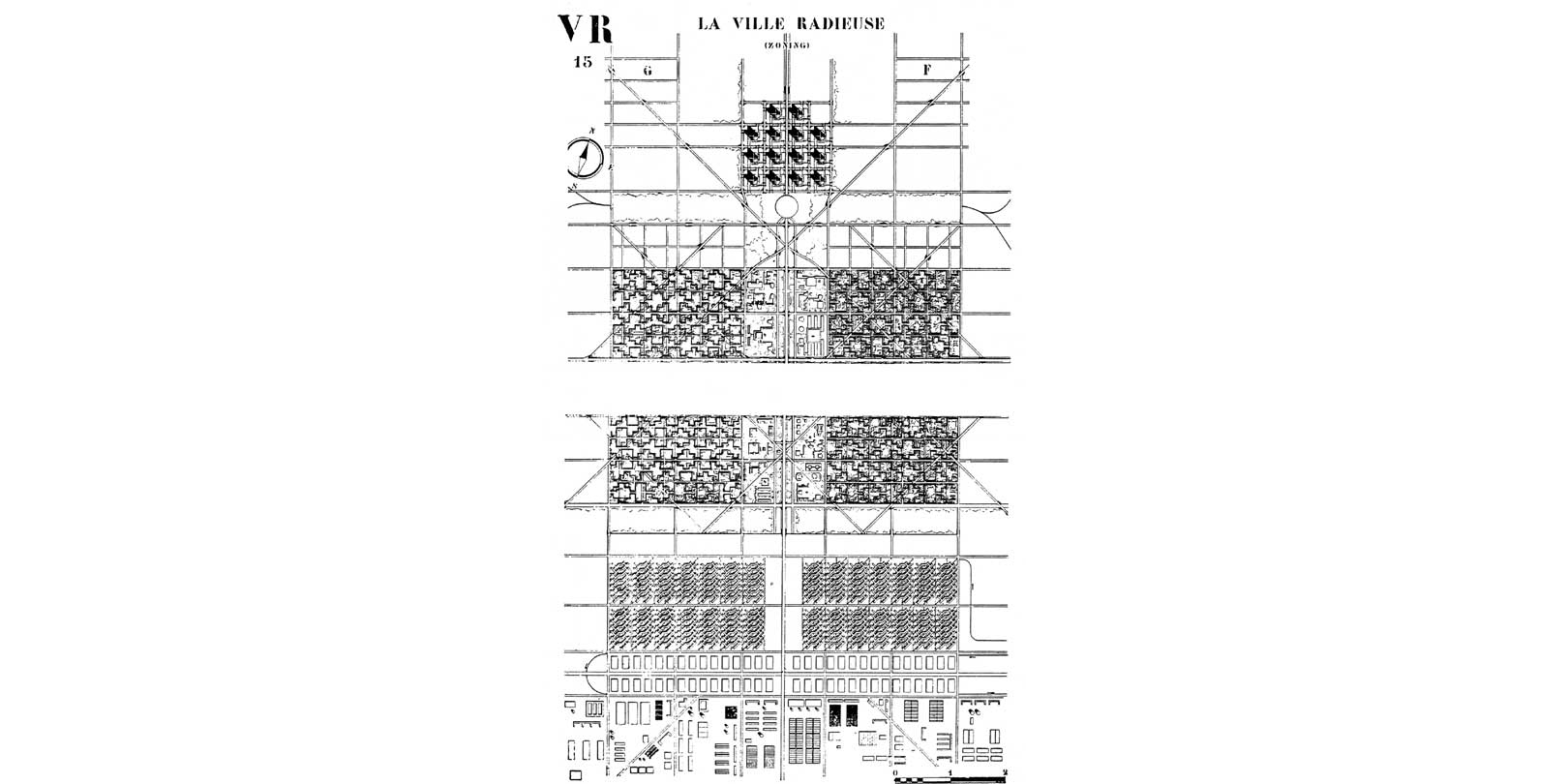LE CORBUSIER'S URBAN PLANNING
RESEARCH PROJECT - URBAN PLANNING v: urban planning issues: city, society, development
YEAR: 2010 / 4TH YEAR - DEPARTMENT OF ARCHITECTURE ENGINEERING, DEMOCRITUS UNIVERSITY OF THRACE
TEAM: MANOLIS VENIERAKIS, NERINI MAVROUDI
SUPERVISING PROFESSOR: GEORGIOS PATRIKIOS
The research starts with the historical context after industrial revolution and the relevant housing and urban plans that have been formed during the 19th century, such as Ideal City of Ledoux, Fourier’s Phalanstere, Godin’s Familestere, Garden City of Ebenizer Howard, Tony Garnier’s Cité Industrielle and Auguste Perret’s Tower Cities. These plans set the background and the possible influence of Le Corbusier’s plans.
In the main part the focus is on the various urban plans, that he developed during his career. These include Ville Pilotis and Ville Contemporaine, which includes the cross-type tower and the two main housing formations (closed courtyard and complexes with setbacks/ à redants). Next, the controversial Plan Voisin is analyzed regarding the historic center of Paris and Ville Radieuse that offered endless expansion and influenced later plans for Chandigarh and Brasilia. Furthermore, the Charter of Athens is one critical point on his theoretical thinking, that set the foundations for modernist urban planning.
The research concludes with the various housing types that formed Le Corbusier’s cities. From the early Dom-ino and Maison Citrohan until the Pavillion d’ Epsrit Nouveau and the Unite d’ Habitation in Marseille.
